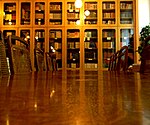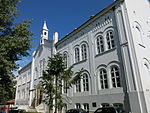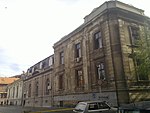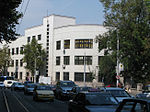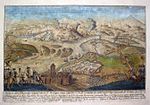No Sleep Festival
Music festivals in Serbia

No Sleep (Serbian: Но слип / No slip) is a music festival which is held at 8 locations in the city of Belgrade, Serbia.The festival was founded in 2017 in Novi Sad as a part of the EXIT Festival, influenced by the festival's No Sleep Novi Sad stage, which was introduced in 2002 as HappyNoviSad stage. The first edition of the festival was held during the first day of the EXIT festival, at the festival's Dance Arena, and it attracted 20,000 visitors. In 2018, it became a stand-alone festival, as it was moved from the Petrovaradin fortress to Belgrade.
Excerpt from the Wikipedia article No Sleep Festival (License: CC BY-SA 3.0, Authors, Images).No Sleep Festival
Zorza Klemansoa, Belgrade Old Town (Stari Grad Urban Municipality)
Geographical coordinates (GPS) Address Nearby Places Show on map
Geographical coordinates (GPS)
| Latitude | Longitude |
|---|---|
| N 44.821751 ° | E 20.474539 ° |
Address
Zorza Klemansoa 22G
11000 Belgrade, Old Town (Stari Grad Urban Municipality)
Central Serbia, Serbia
Open on Google Maps
